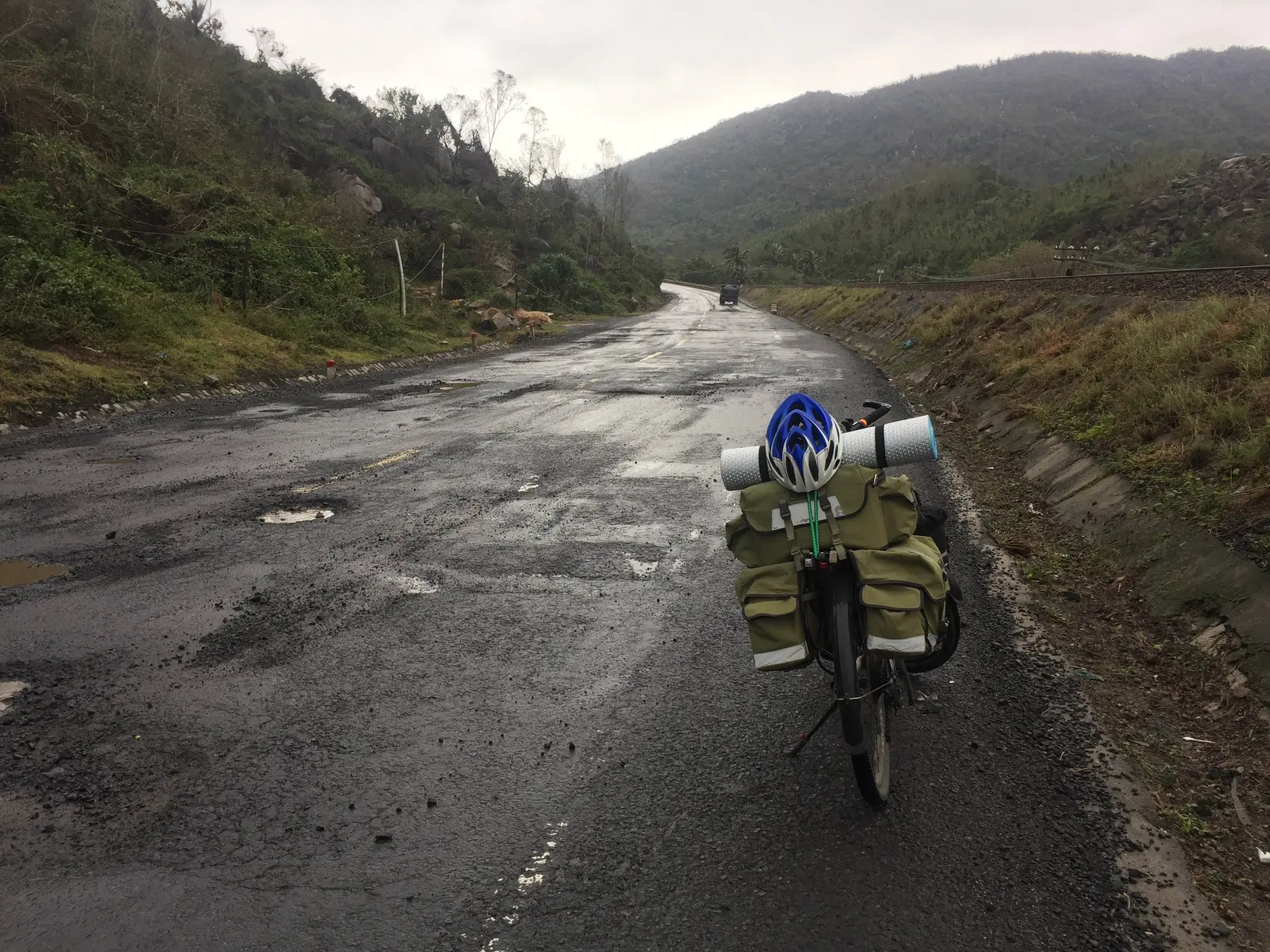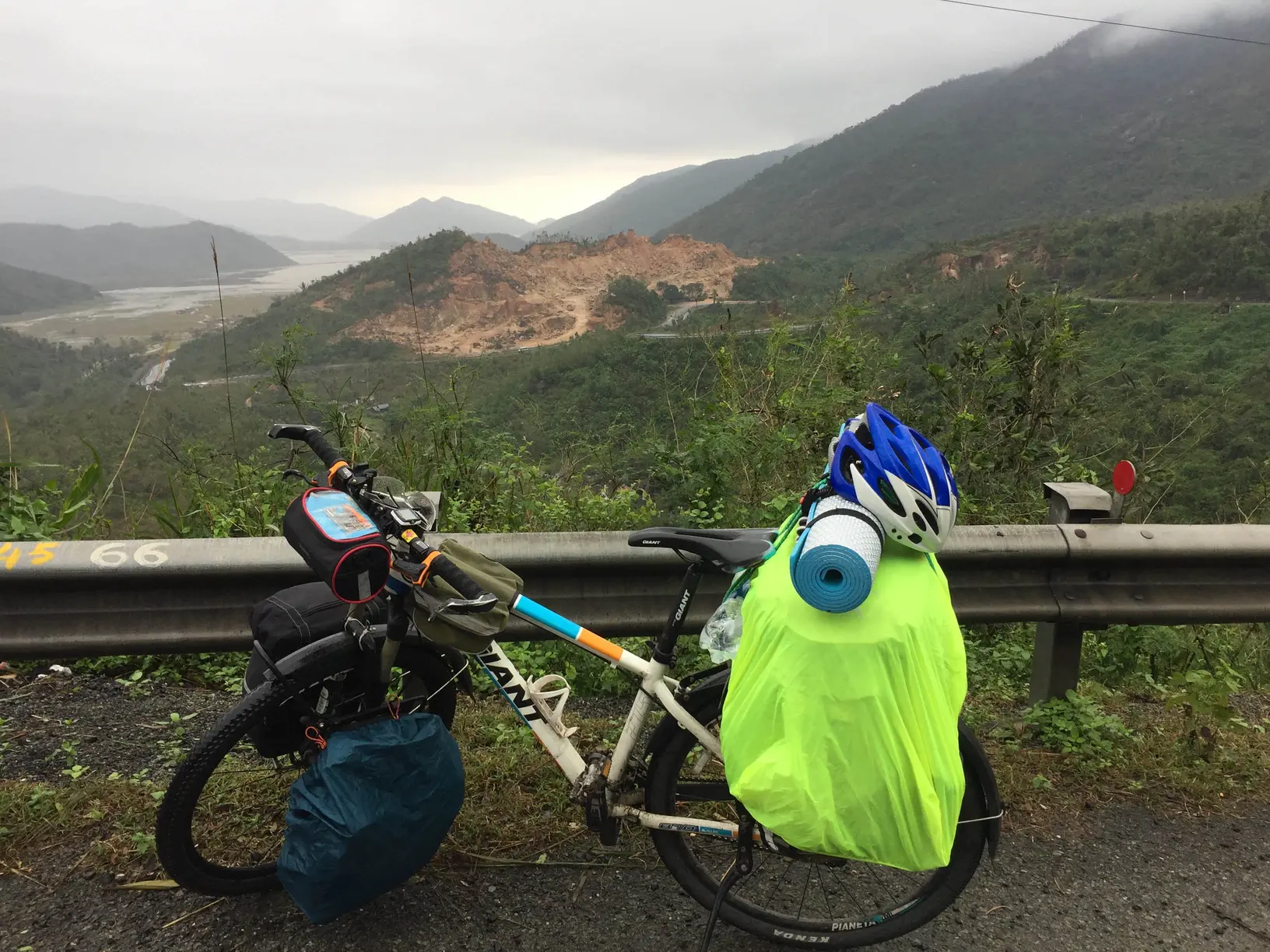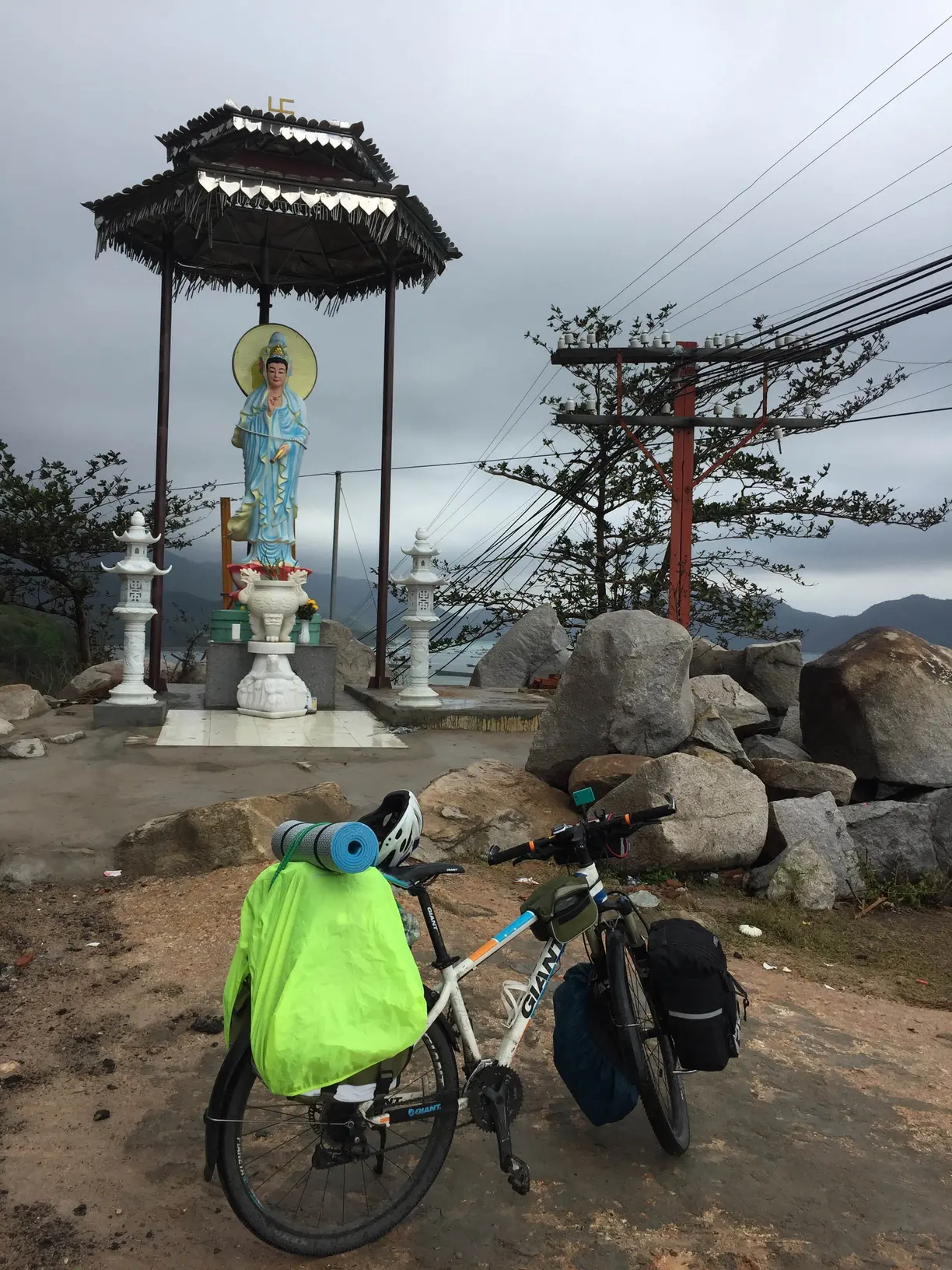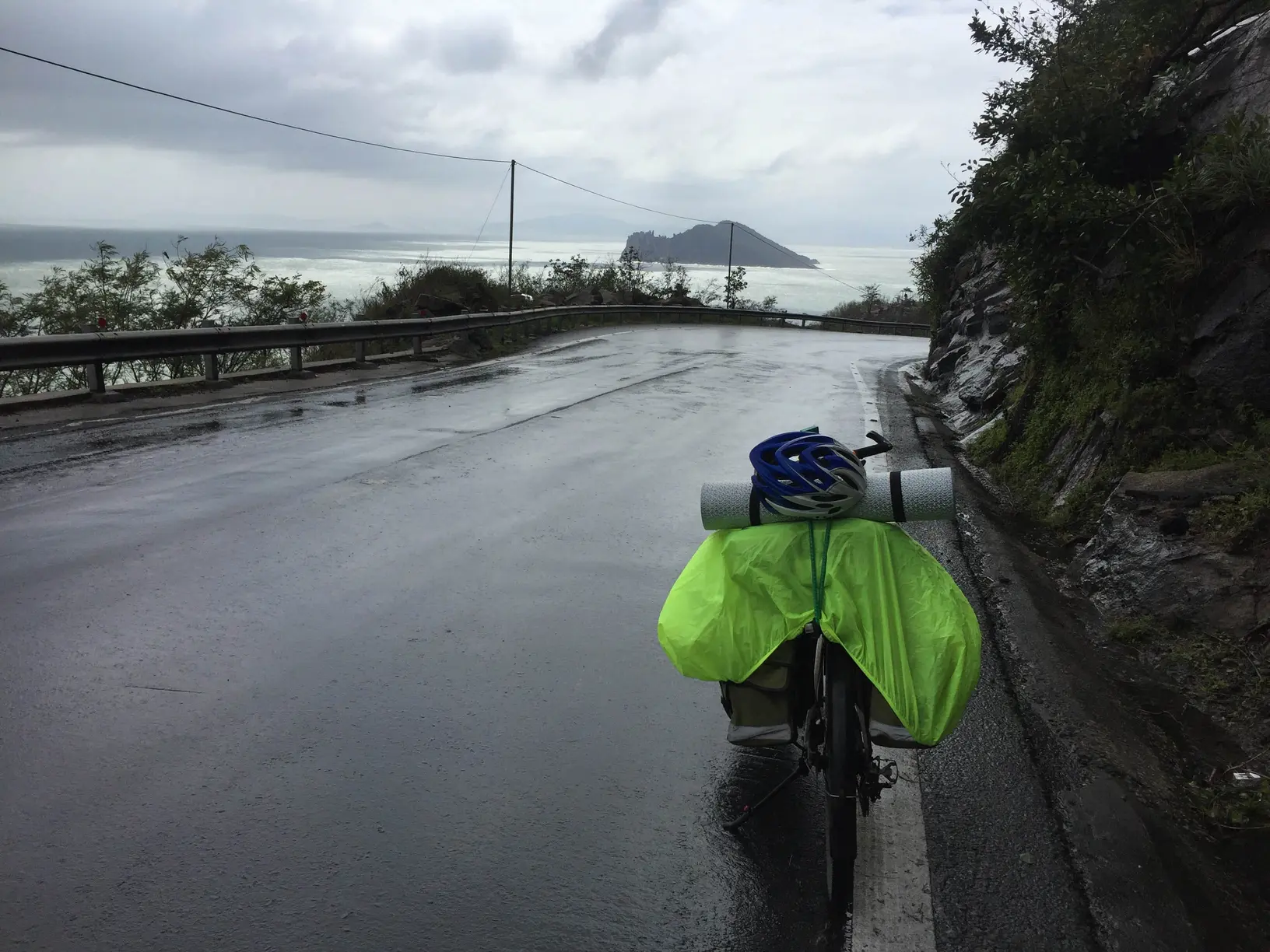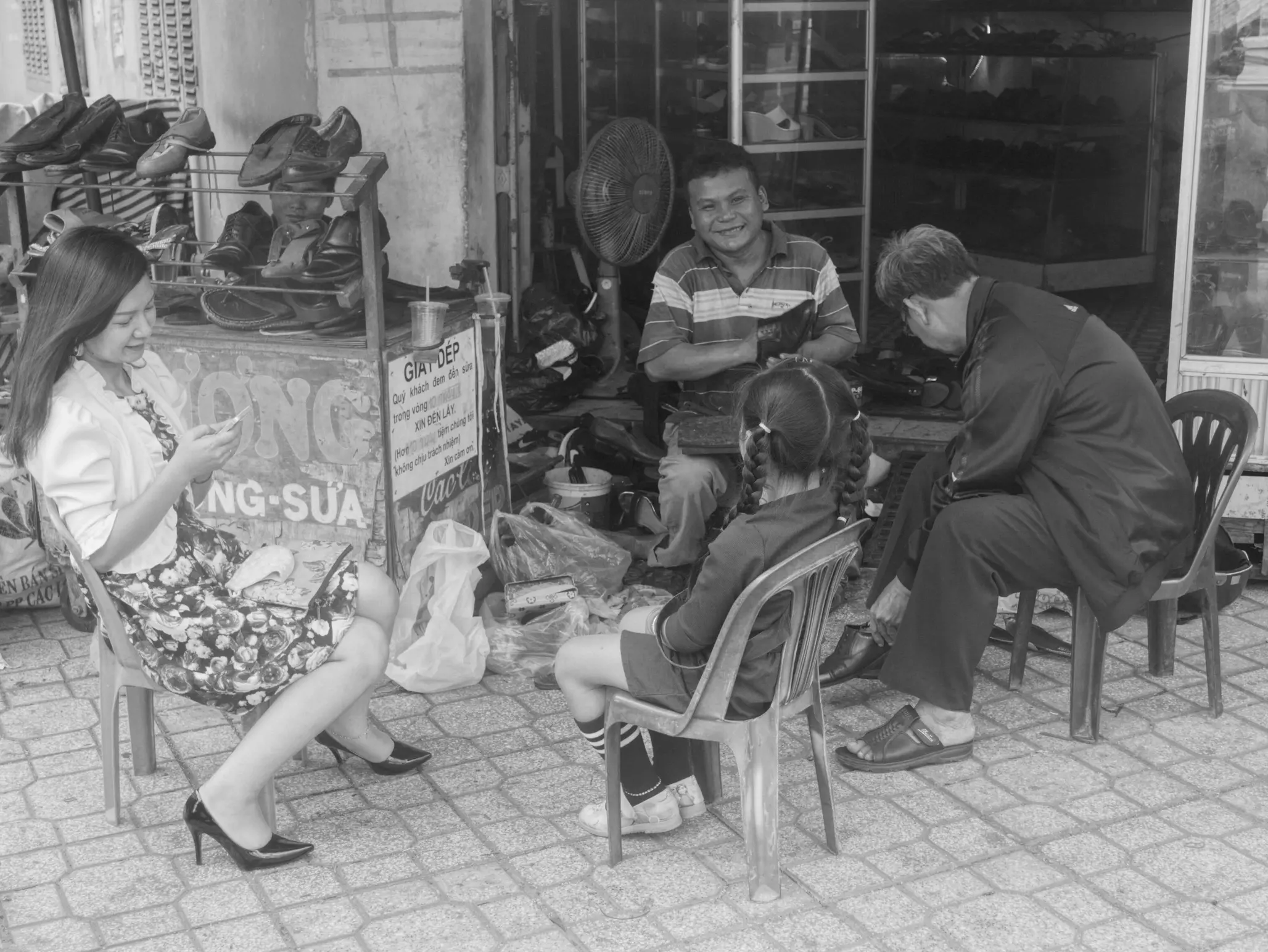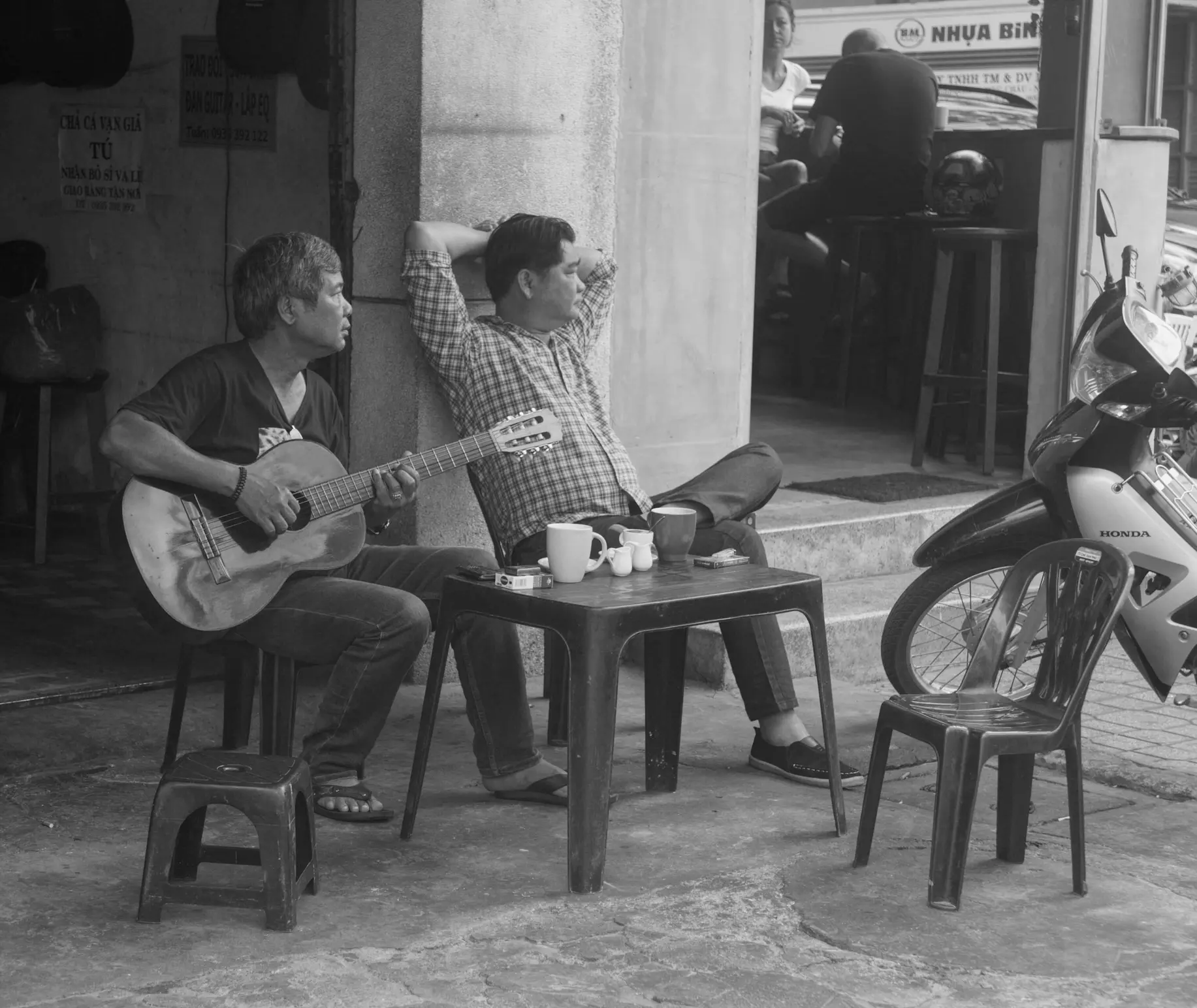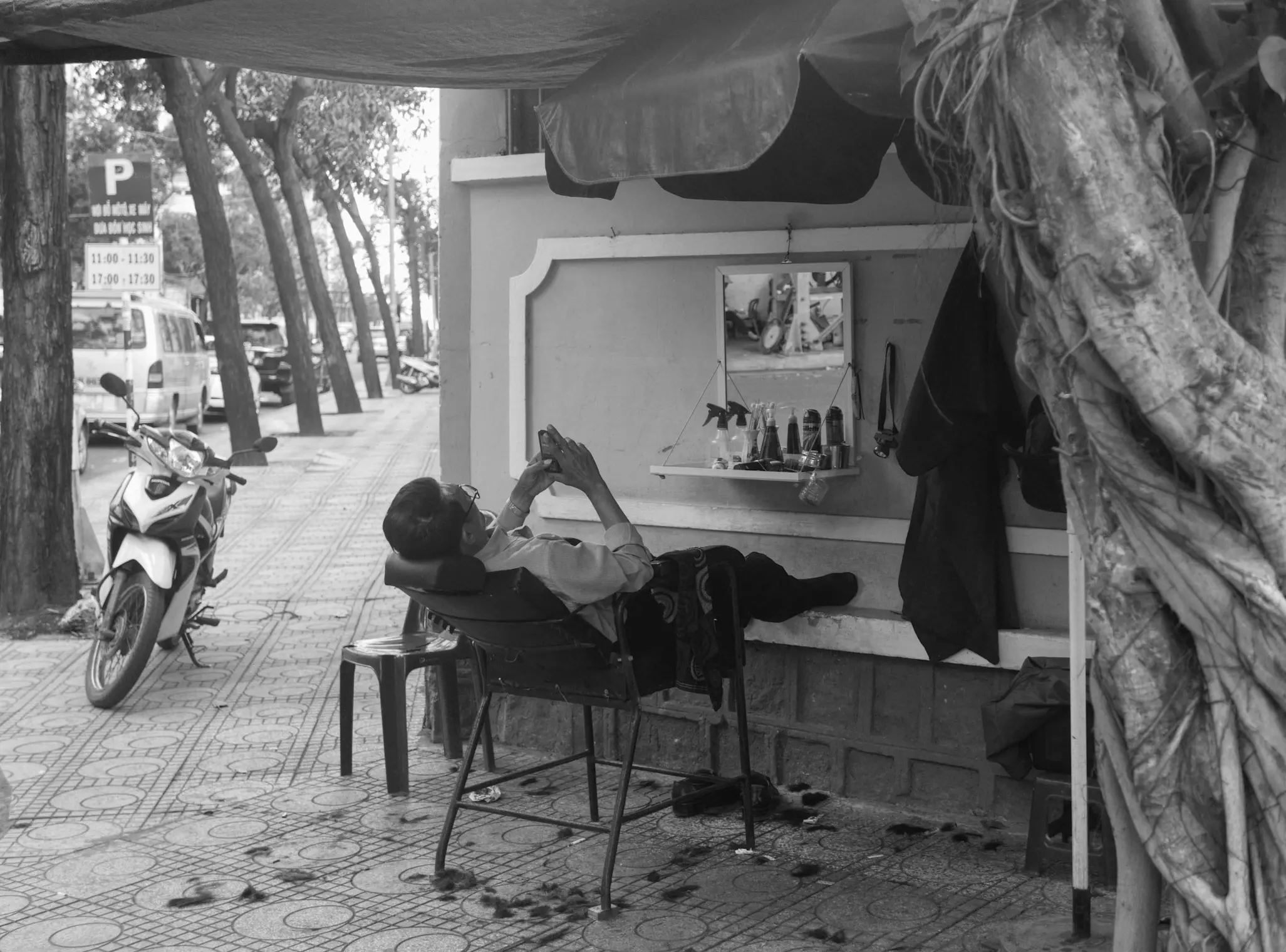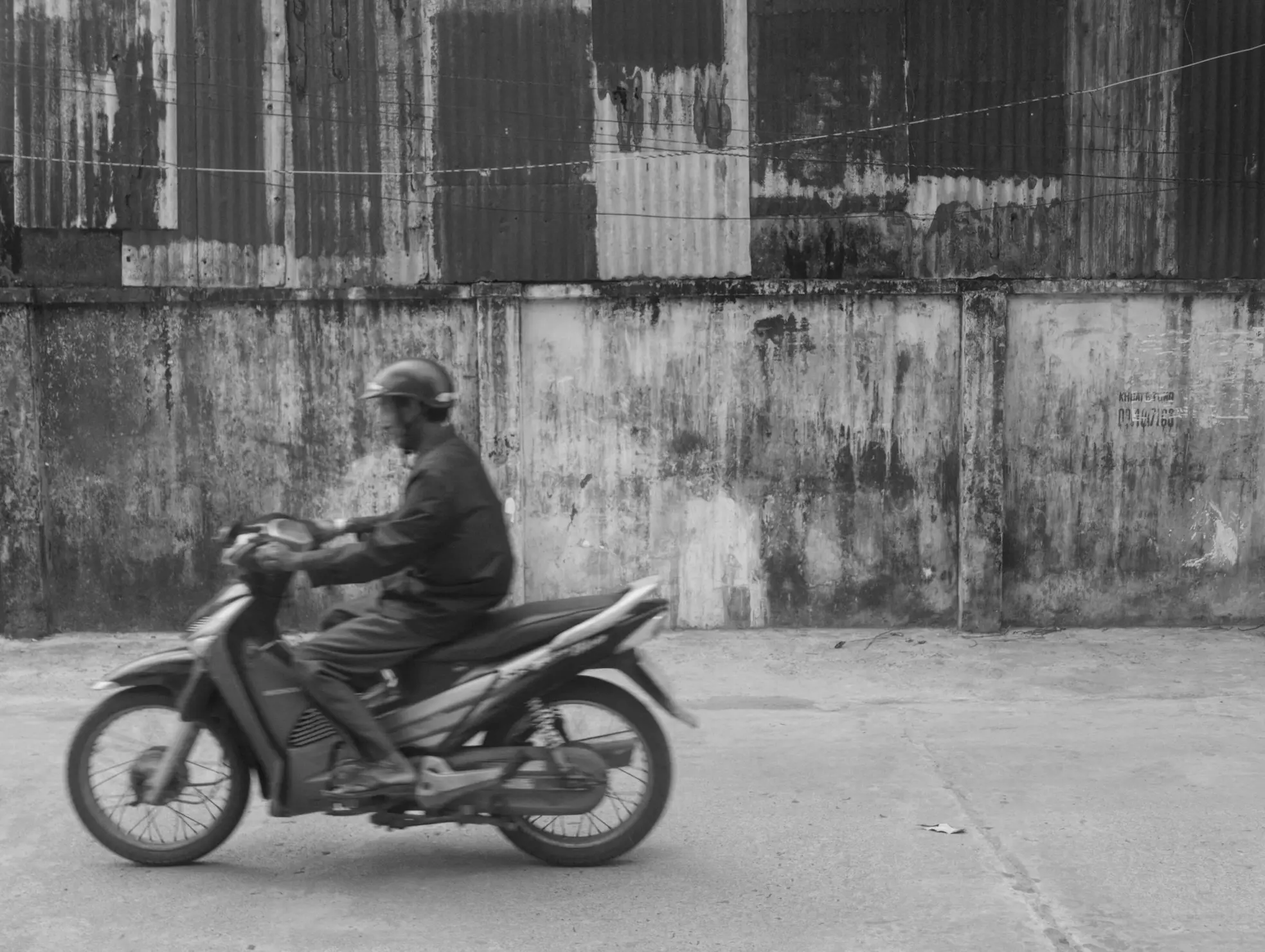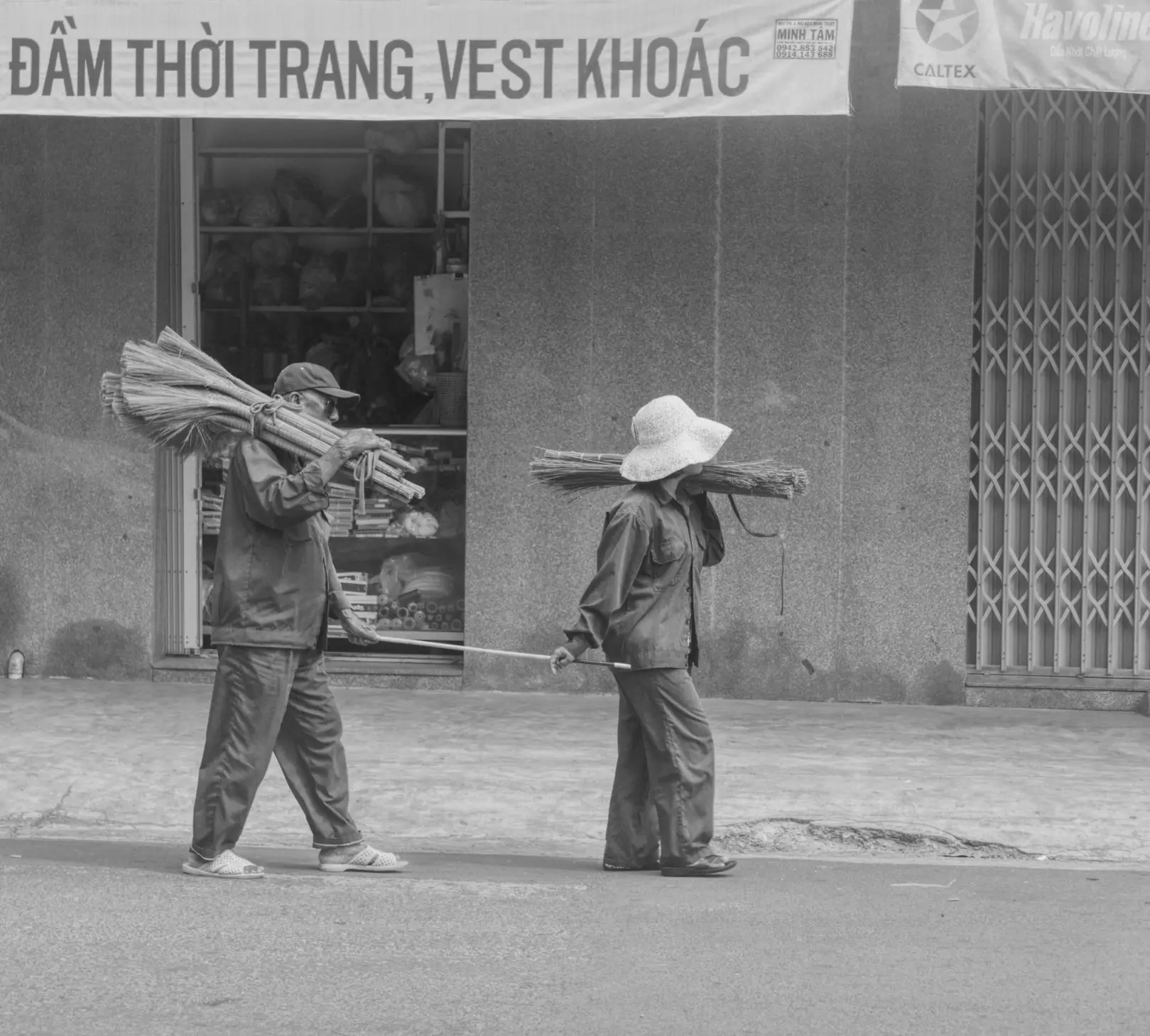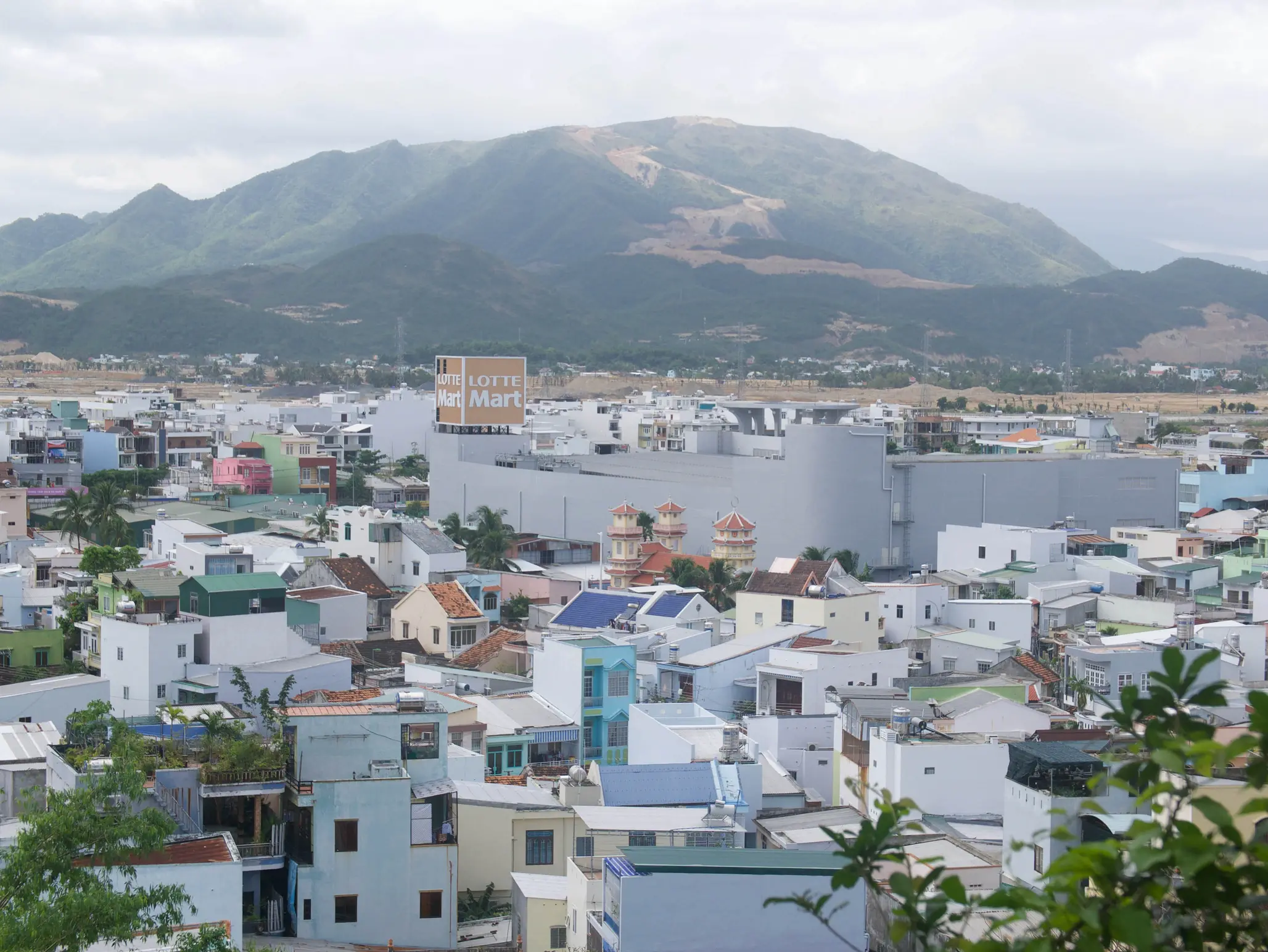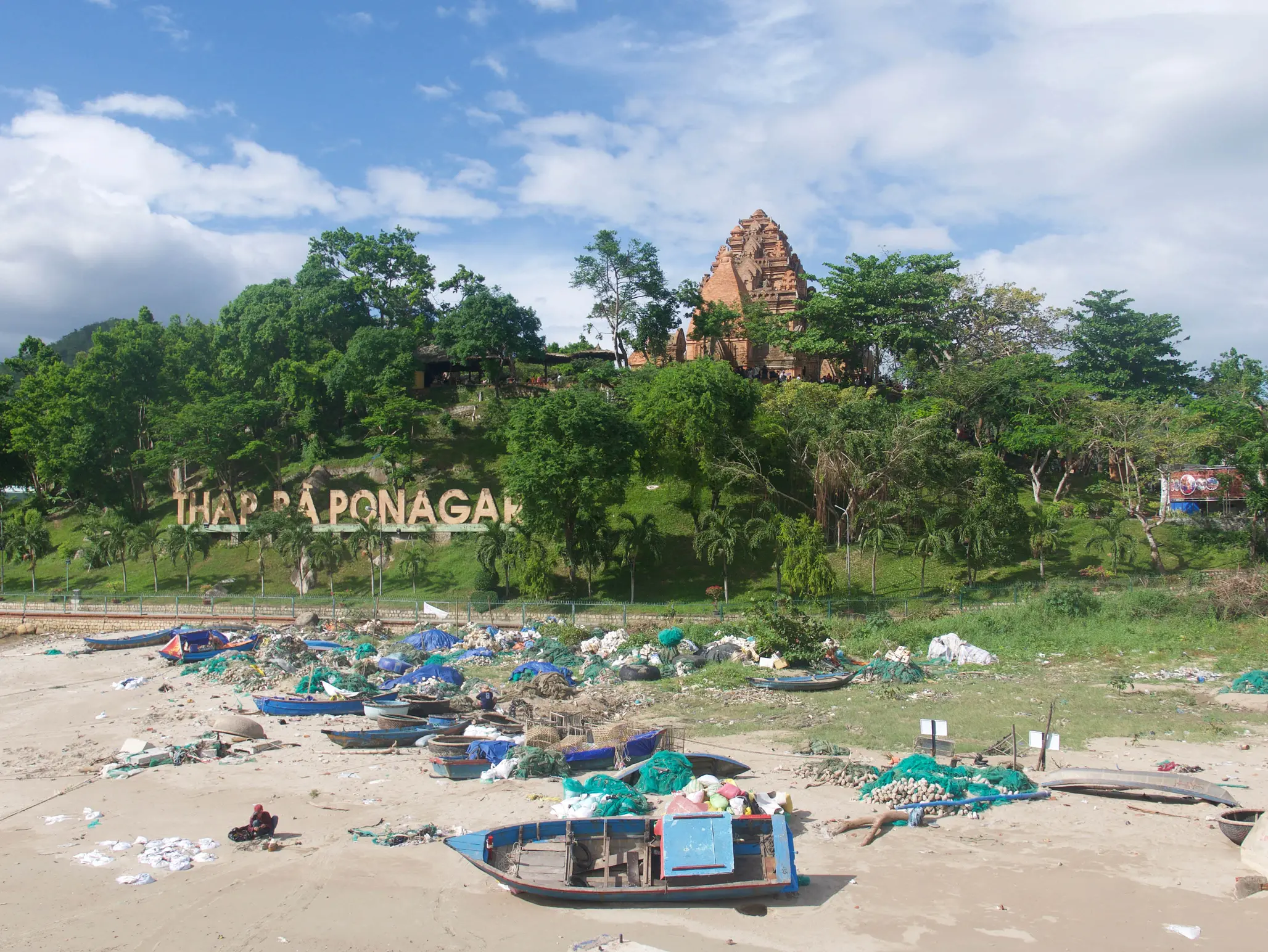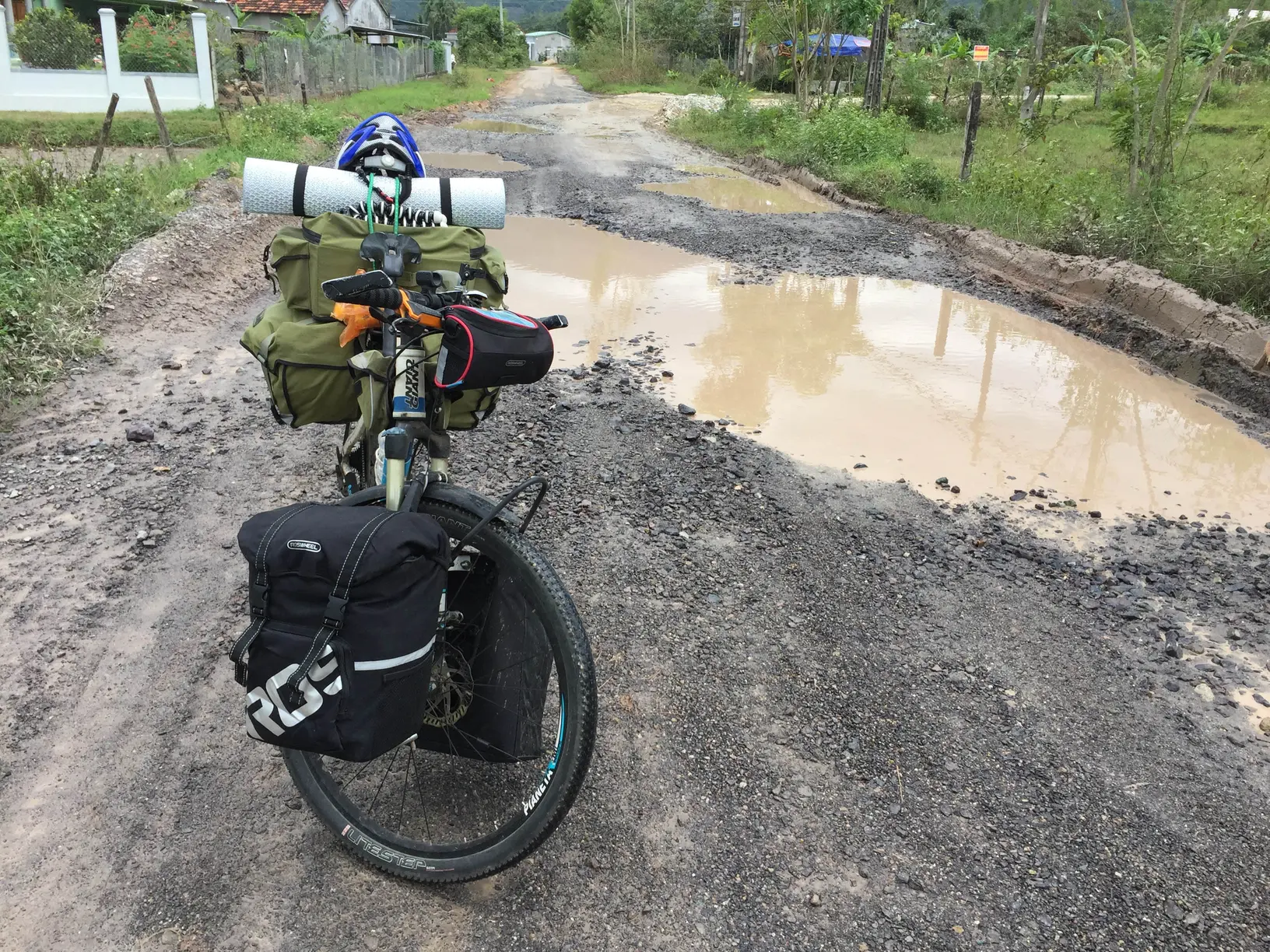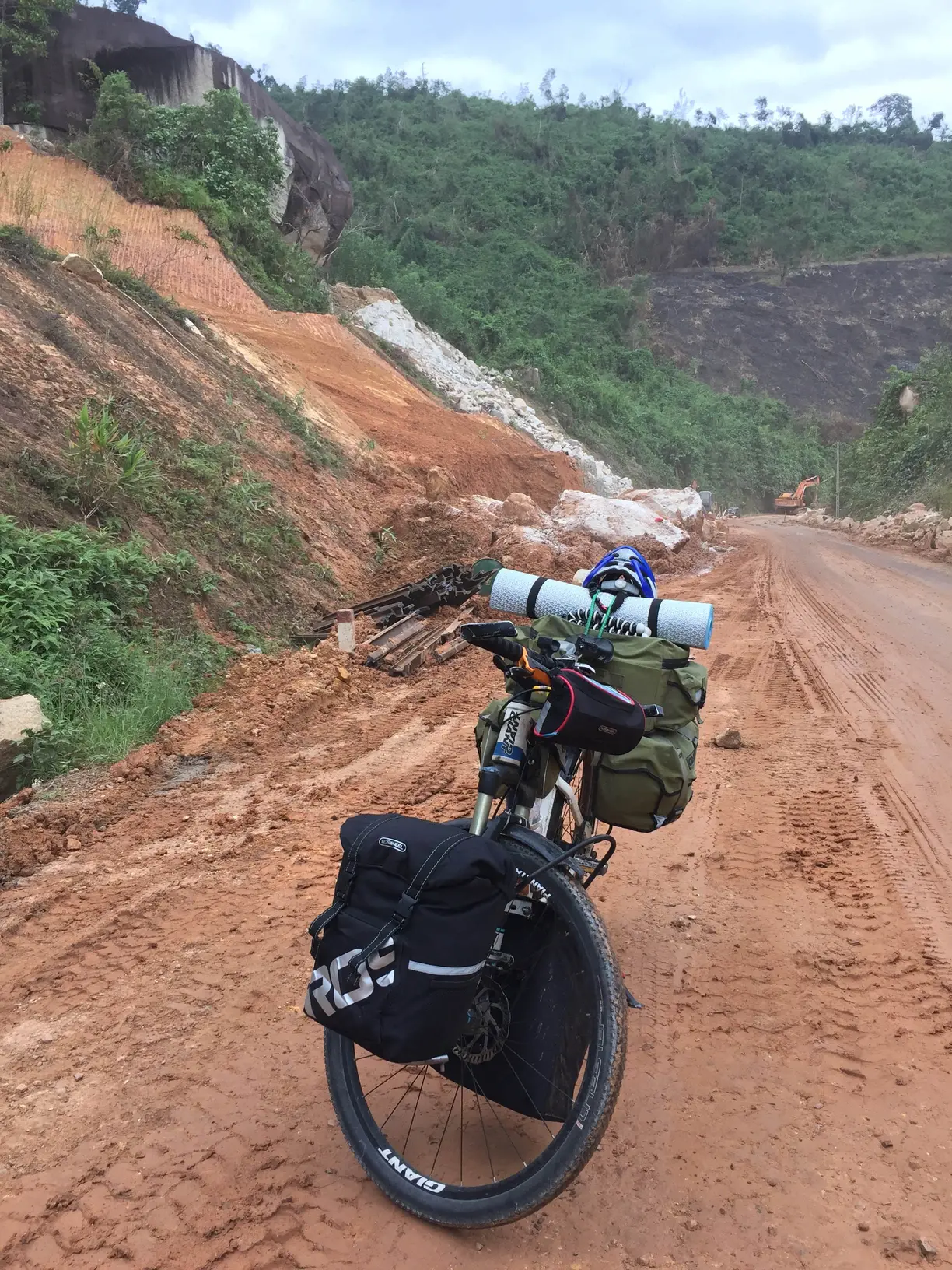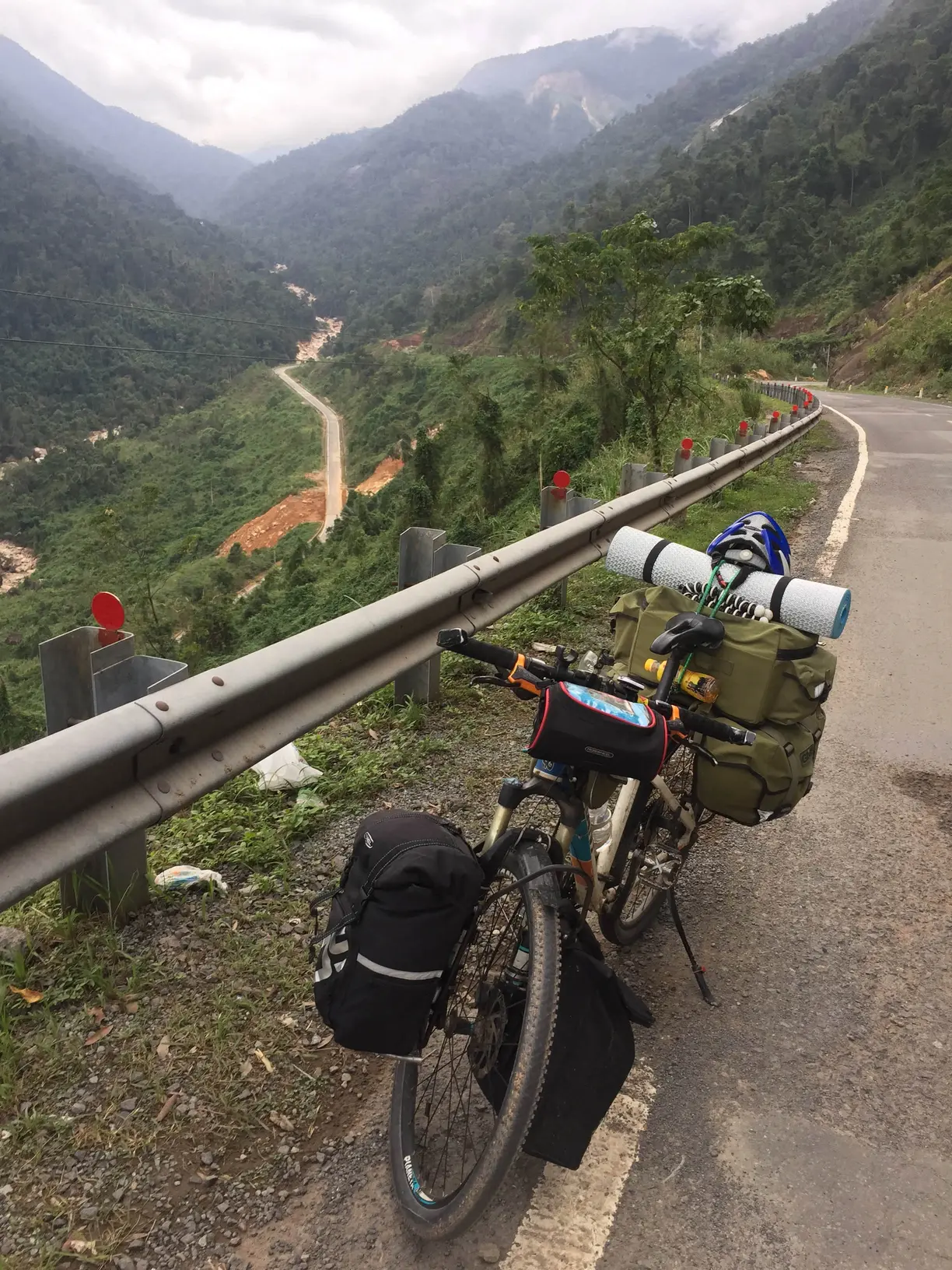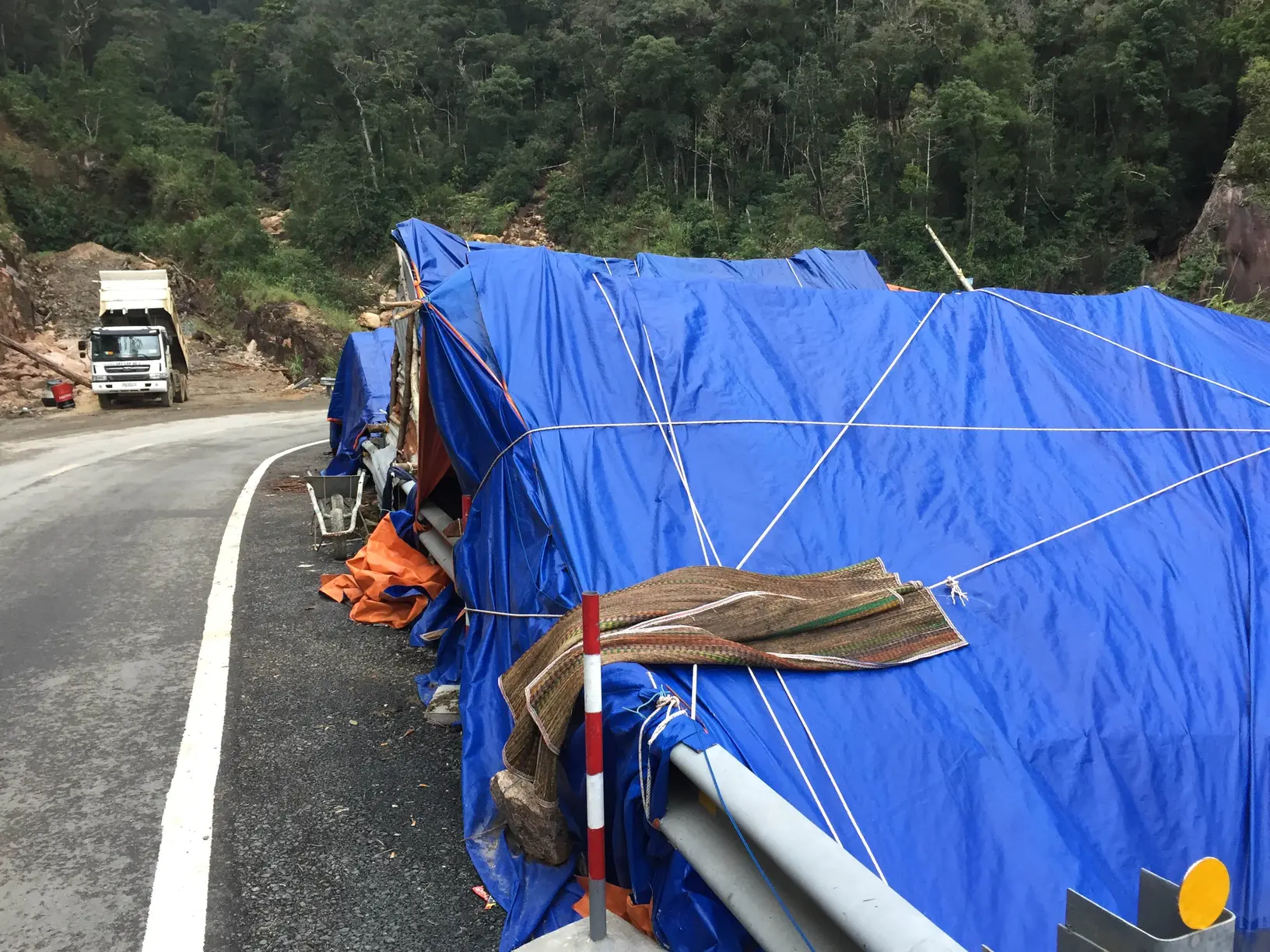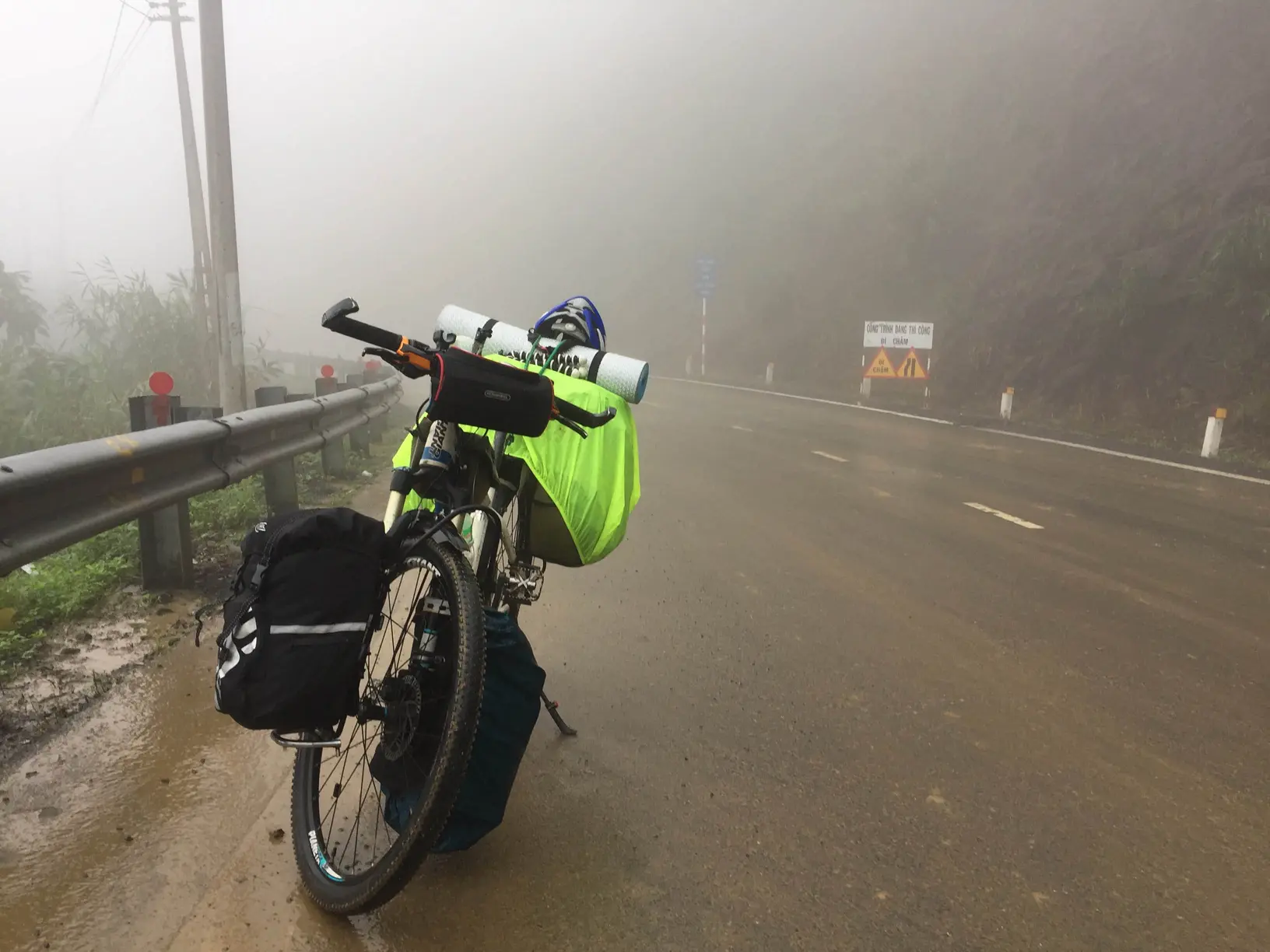10
Riding alone, most of the time it’s boring, with empty winds, monotonous clouds, unchanging scenery, and roaring motorcycles. Repeat after a short while, roaring motorcycles, unchanging scenery, monotonous clouds, empty winds.
The only highlight was tasting the most delicious chicken rice throughout the journey. The owner placed the cooked chicken on top of yellow steamed rice, cooked with chicken broth. It was served with mint leaves, cucumber, as well as a bowl of clear soup and a plate of side dishes as usual. At this point, I would also order a bottle of beer, usually Tiger Beer. I had been drinking this beer throughout the journey. Most of the time, the beer was at room temperature since many roadside shops didn’t have refrigerators, but ice cubes were a staple. The owner brought a beer glass filled with ice cubes of various sizes, poured the beer, and it made a “hissing” sound. The beer had a bright color, and with a sip, it was refreshing. A sip of beer along with a few bites of chicken rice, and it quickly disappeared.
The entire journey from Guiyun to Suihe was mostly against the wind. Facing the strong wind, watching the speed on the odometer getting slower and slower, I had to pedal harder with my legs and grip the handlebars tightly, making sure the front wheel didn’t get blown off and fall into the ditch by the roadside. Wearing cycling glasses or not was also a dilemma. Wearing them was too hot, with sweat trickling down my forehead and accumulating on the frames, instantly blurring my vision. Not wearing them, the wind would sting my eyes, followed by fine sand hitting my face and even getting into my mouth. The same dilemma applied to the magic headband. Wearing it blocked air circulation through my mouth and nose, while not wearing it allowed the wind and sand to invade my mouth.
In the end, I decided to wrap the headband around my neck and occasionally pull it up to cover my mouth and nose, or pull it down to breathe freely. If the wind was too strong, I would put on my glasses and if it eased, I would take them off and hang them on the mounting bar of the sports camera attached to the front of the bike. Initially, I was worried that the wind might blow them away, but later I found that as long as the road wasn’t extremely bumpy, they remained stable.
Following the map along Highway 1, it’s easy to accidentally end up on the expressway. Unlike in China, Vietnam’s expressways do not have separate ramps or obvious toll booths. I had seen a few sections of expressways connected to Highway 1 before. Motorcyclists would turn onto a small road while riding, and if I foolishly continued following the cars, I would definitely be stopped by the police. This time was no different. I was suddenly stopped by a police officer at an intersection while riding. He gestured to me that the road ahead was the expressway and bicycles were not allowed. With a big wave of his hand towards the small road on the left, he indicated that I had to go that way.
Next to the intersection was a small road, full of potholes and in poor condition. Looking at it on Google Maps, compared to continuing straight on this road, following this small road would make me detour an extra circle, only to return to Highway 1 in a certain town ahead, increasing the distance by twenty to thirty kilometers. After careful consideration, it seemed that the police officer wouldn’t be flexible, so there was no other choice but to take the small road.
I observed the passing vehicles by the roadside and took advantage of the gaps when no cars were coming. I pushed my bike quickly to the intersection before starting to ride. The rough road tested my speed, patience, and luck with the weather. I couldn’t go too fast, had to be patient, and it would be best if it didn’t rain. Looking at the black road surface filled with water in the potholes, I hoped to encounter fewer large trucks. When these big guys passed by, mud would splash everywhere, and I had to be alert and expend extra energy to observe the surroundings. Weather forecasts were always unreliable, and the dark clouds above wouldn’t reveal much information. If there was a heavy and refreshing rain, it would be fine, but unfortunately, that wasn’t the case most of the time. It always started with a drizzle, continuous but light rain that put me in a dilemma. Should I continue? The accumulated rainwater might wet my panniers and damage electronic devices. Should I stop? If I put on the raincoat, most of the time the rain would stop.
The theater of my mind was roaring, but my feet didn’t stop pedaling. I pedaled with a wheezing sound. After making a U-turn, the rain suddenly intensified, and the wind kept harassing me from all directions. Looking at the endless mountain top that seemed unreachable, I pondered for a moment, then stopped and put on my raincoat. I also covered my panniers with a rain cover. Motorcyclists passing by me relied on their speed and couldn’t be bothered to stop and put on their raincoats. They revved their engines and sped away.
When you don’t know how many kilometers are left to the mountaintop, you always have to find some comforting words to motivate yourself to climb. At first, it’s self-deception, silently repeating in your mind that once you pass this bend, you’ll reach the top, you’ll make it, you’ll make it. Then you bury your head and pedal hard, swearing not to stop, rest, or drink water until you reach the top. This cycle repeats over and over again until you finally catch a glimpse of light. With a burst of energy, you increase your speed and finally reach the summit.
I didn’t stay long at the mountaintop, just took a sip of water and caught my breath before continuing. The downhill road was built along the mountainside, gently sloping downward, with the mountain on one side and the sea on the other. Whenever a large truck passed by, it would create a thick mist that I would inevitably encounter. The mist would hit me directly and blind my vision. So I couldn’t go too fast; I had to ride slowly. I couldn’t brake abruptly either, as the brake pads would make a squeaking sound when wet, so tapping the brakes lightly was the most appropriate. Braking for a moment and then releasing, I could better control my speed. After riding a short distance, all the mud on the tires was washed away, and the bicycle regained its bright colors, with the tires shining like new. Gradually, the sunlight peeked through the dispersing dark clouds, casting a few strands of light. The sea breeze carried the scent of mud, grass, and the smell of the ocean. I savored this wonderful experience and suddenly caught a glimpse of a sculpture that looked like Guanyin Bodhisattva. I quickly squeezed the brakes and turned back to take a closer look.
Indeed, it was a Guanyin Bodhisattva statue. A small umbrella was fixed there, surrounded by metal leaves and wind chimes. The sea breeze blew, and the chimes kept ringing. It was the crisp sound of the chimes that drew me in. Under the umbrella stood the statue of Guanyin Bodhisattva, holding a pure bottle in the left hand and a willow branch in the right hand, with a form and appearance identical to those in my home country.
After descending the hill, I arrived in Nha Trang, and familiar sights appeared before my eyes: motorcycles, pedestrians, and cars meeting on narrow roads; cutting in, jostling for position, running red lights all at once; sudden braking, going against traffic, crossing the road horizontally, all too common… Accompanied by the relentless honking of car horns, the roaring of engines, and the chatter of people, a unique atmosphere of the human world poured into my body, and I regained a long-lost feeling.
11
If Da Nang is the realm of the Koreans, then Nha Trang is the city of the Chinese.
Nha Trang attracts numerous tourists with its clean beaches and excellent diving environment. However, neither of these holds much appeal for me. Instead, I wandered around the old town with a small bag on my back.
The language barrier, at moments like this, becomes a unique experience. It’s like what Mr. Zhu Guangqian said: when you have lived in a place for a long time, you can tell that a certain street leads to a specific school or understand the meaning of a particular sign just by looking at it. In this way, attention is always “from here to there,” and I can’t fully concentrate on observing what the street is like or what the people here are like.
Being in the streets of Nha Trang, the Vietnamese language is completely unfamiliar to me. This unfamiliarity brings about a special ability, a sense of detachment: I am both among the crowd and somehow removed from it. The buildings, scenery, and signs I see on the street do not offer me practical significance. They have not yet become tools; they are not someone’s home, a signpost, or easily overlooked objects. The houses are still combinations of various colors and lines, and the patterns on the signs are diverse. This is their inherent beauty.
Language itself can also provide a similar experience of “estrangement.” Someone once asked online why Japanese place names sound so poetic. It’s because those place names do not evoke everyday things that most people are familiar with. Hearing names like Hokkaido, Nara, or Kyoto doesn’t bring to mind the cellphone store downstairs, the nearby hair salon, the clothing store blaring popular songs through loudspeakers, or the streets with flowing sewage. When hearing these unfamiliar place names, concrete referents have not yet formed in the mind, and what is experienced is the beauty of the words themselves.
The experiences gained from exploring new places can also enrich the observation of familiar things, inspiring new discoveries. Upon returning to the place where one has lived for many years, applying these newly acquired methods can reveal new beauty in things that have remained unchanged for years, decades, or even longer.
I followed my intuition, without consulting any guidebooks or maps, and wandered around the streets. After a little over an hour, I arrived at the Nha Trang Cathedral, situated in the bustling city yet exuding a sense of tranquility. The cathedral has distinct Vietnamese features, with its red cross, shrine illuminated by pink lights, blue neon arch, and the statue of the Virgin Mary under a white halo. Unfortunately, the main gate was closed. I inquired about the details from a nearby resident, and she informed me that it closes at noon and reopens in the afternoon.
Not far from the cathedral is the train station, and walking west for a few hundred meters along the train station led me to Long Son Pagoda. From virtually anywhere in the city center of Nha Trang, one can catch a glimpse of a majestic white Buddha standing tall among the mountains at Long Son Pagoda. Seated on a lotus flower, the Buddha overlooks the joys and sorrows of the earthly world. The base of the Buddha statue bears relief sculptures depicting the self-immolation of Venerable Thich Quang Duc and several other monks in Saigon, protesting the series of policies against Buddhists imposed by the South Vietnamese government.
After leaving Long Son Pagoda, I meandered through the streets and alleys until I reached a bridge. On the other side of the bridge, a group of colorful and magnificent buildings awaited me—the Po Nagar Cham Towers, remnants of the ancient kingdom of Champa. I had seen them from a distance on the day I cycled into the city. As a tourist attraction, it attracts numerous visitors. As a religious site, it still sees worshippers paying their respects. The earliest towers were made of wood but were destroyed in the ravages of war. Local people rebuilt them using brick and stone structures. The towers are adorned with many stone slabs, carved with historical and religious motifs related to the kingdom of Champa. Some temples house deities and allow visitors inside, but they must wear robes and slippers provided. Some temples also feature dance performances, similar to the Apsara dance in Cambodia, though I do not know its Vietnamese name.
Returning from the towers, it was already late in the day. After walking along the seaside for a while, I found a place to have dinner and then explored the lively night market and other bustling areas. The list of experiences goes on and on.
12
Leaving the city of Nha Trang and heading towards Dalat, an inland city nestled amidst mountains, the road gradually became inclined. Since I hadn’t eaten breakfast in town, I found a small food stall by the roadside and had a bowl of rice noodles. Next to the stall was a small convenience store owned by a person of Chinese descent. She no longer spoke Chinese, as her ancestors did, but she had a small blackboard on the store wall with simple Chinese words and their Vietnamese translations. She mentioned that she was learning Chinese from variety shows in China and even recited a few words for me.
After the meal, I resumed my journey. This road leading to the inland areas couldn’t compare to National Highway 1. It was mostly a two-lane road dominated by cars and motorcycles, with fewer large trucks. The weather was pleasant today, and I was in good spirits. With the assistance of a tailwind, I rode relentlessly. The strategy of taking breaks every 20 kilometers or an hour, which I usually followed, changed as I unexpectedly rode nearly forty kilometers without stopping. When I paused for a drink of water, I checked the map and frustratingly realized that I had taken a wrong turn and missed a turn at a particular point. It was already past 11 o’clock, and it would take at least another hour to ride back twenty kilometers. I bought two bottles of beer from a roadside convenience store and quickly downed them before turning my bike around.
After riding for more than ten kilometers, I sought a shortcut for the final stretch, planning to cut through a village. As expected, shortcuts are not to be trusted, and this one turned out to be much more challenging than the main road. I bought some oranges and small apples from a roadside market, placing the small apples in the side pockets of my rear panniers so that I could grab them without stopping when I wanted to eat. One hand on the handlebar, the other holding an apple, I enjoyed its sweetness. The village mainly focused on rice cultivation, and a dirt road meandered through the fields, sparsely populated. Occasionally, motorcycles and tractors passed by. I passed a house where a group of people was gathering, and loud music could be heard from afar. When they noticed me, everyone waved cheerfully, some inviting me to join their gathering. I waved in gratitude but declined their invitation, riding out of the village and back onto the main road.
At this point, it was already noon, so I found a place to have lunch and rested for a while before heading towards Yangsin Mountain. Yangsin Mountain marked the border between Nha Trang and Dalat, and once I climbed this mountain, I would be close to Dalat. Along the way, I met a German traveler who had started from Ho Chi Minh City, went to Dalat, then headed to Nha Trang before turning back to Ho Chi Minh City. He told me that there were no shops or people on the way to Yangsin Mountain and Dalat, and it could be quite cold on the mountain. The mountain road was also challenging to climb. He mentioned that Dalat was currently hosting a flower festival, which was beautiful. Taking his advice, I checked my water and food supplies and realized they were insufficient. I stopped at a roadside convenience store and bought two bottles of mineral water, one large and one small, and some biscuits.
By around 3 o’clock, I reached the foot of the mountain. As I looked ahead, the winding road disappeared into the mountains, with no signs of human presence around. At this point, motorcycles were also scarce, mostly replaced by tourist buses and cars. Riding in the serene mountains, I could hear the honking of the buses from afar, but it would take several minutes for them to appear in front of me. Occasionally, I passed a few motorcycles, and they seemed curious about a cyclist like me, often looking back from a distance.
After over an hour of riding, I spotted a small building at a bend ahead and breathed a sigh of relief, thinking I had reached the mountaintop. However, as I looked up, the fog started creeping in from the distance, and the daylight gradually faded. I stopped to take a few photos, estimating that I would be able to descend before it got dark. Unexpectedly, instead of a downhill slope as I had anticipated, the road continued uphill after the turn. Finally, I had a short stretch of flat road, but before my thigh muscles could relax even slightly, a new challenge emerged.
How can I describe this change? The mist had surely been brewing at the mountaintop for a long time, and the fog silently appeared beside me. Water columns cascaded from the cliffs, crashing onto the ground with a rumble. The sky seemed to darken abruptly. All these transformations must have been in progress for quite some time, but to me, they seemed to happen in an instant. I didn’t know when it started, but it felt like I had stepped into an enclosed realm enveloped in fog. There was no visible path ahead, nor could I see the road I came from when I turned back. It was just me and my bicycle in this realm, and all the buses and motorcycles I had encountered earlier had vanished without a trace.
I stopped and covered my panniers with a waterproof cover, turned on the bike’s headlights and taillights, and tried to ride as close to the side of the road as possible.
Once I get over this slope, I should reach the top. Well, that’s what I thought.
This curve should lead to the top, right? Oh no, it’s still a slope.
I must be close by now. Keep going, don’t stop. It’ll be even harder to climb if I stop and rest.
The rain intensified, and thick fog enveloped the surroundings. The bike’s headlights could only illuminate a few meters ahead. Occasionally, I heard the sound of cars and instinctively moved closer to the side of the road. The visibility was extremely poor, and I had no idea when it would improve.
Three parts physical strength, seven parts willpower. I had this realization when I cycled in Tibet a few years ago. Physical strength, equipment, and the bicycle itself are never the most crucial factors. As long as you have the determination to ride, whether fast or slow, you will eventually reach your destination, like Lhasa.
After making a U-turn, the accumulated rainwater added a heavier burden on me. The power transferred from my calves to my toes and then to the pedals, gradually decreasing with each step. My speed became slower and slower. I stopped and checked, and my rear tire was flat. My phone had no signal, and I didn’t know how many kilometers were left to the mountaintop. I was at a loss, torn between going forward or repairing the flat tire in the rainy night.
Observing my surroundings, I noticed a slum area to the left, devoid of any light. It seemed uninhabited, so I thought of setting up my tent there for the night and waiting until morning. I pushed my bike towards it when suddenly a figure emerged. The beam of their flashlight was blinding, and they spoke loudly, but I couldn’t understand a word. I tried asking in English, but they looked puzzled. Eventually, they slowly retreated back into the house, waving their hands for me to leave, and promptly closed the tarp. Throughout this encounter, their eyes were fixed on me, and the light from the flashlight never left my body.
With no other options, I reluctantly pushed my bike forward, searching for another place to stay. Just then, a rumbling sound approached, and a beam of strong light illuminated the sky. A large truck stopped behind me, and a group of men got out.
The woman from the house approached them and said something. I hurriedly went over, introduced myself in English, and gestured towards my bike, indicating a flat tire. I also pointed to the pitch-black night sky and the muddy road, pleading for them to let me stay for the night. The leader and his companions glanced at me, then at the bike, and even poked at the tire. After a brief discussion, they agreed.
One of the guys motioned for me to follow him. I pushed my bike alongside him, and he led me to an open space on a grassy lawn in front of the slum area. Using gestures, he indicated that I could set up my tent there. My inner emotions remained calm, even somewhat… melancholic. I held onto the guy, partly pleading and partly requesting if I could stay inside the slum, just to have some shelter from the wind and rain.
Finally, after obtaining their consent, I was allowed to stay inside the slum. The roadside barrier was high, and the slum was located outside of it. My heavily loaded bike was quite cumbersome, but with the help of several people, we managed to move it. The roar of diesel engines filled the air, and lights gradually lit up in various places. The people were curious about my experiences and name. We relied on my phone, which occasionally had a signal, to communicate happily through translation.
Then, I was invited to have dinner with them. Unable to resist their enthusiasm, I drank more than half a bowl of rice wine. As my face turned red, laughter pierced the tranquil night sky. After the meal, I took out 500,000 Vietnamese dong as payment for the overnight stay and as a token of gratitude. However, the elder brothers who had been drinking strongly discouraged me and directly stuffed the money back into my pocket.
The guys sharing the room with me were from the northern and central parts of Vietnam. They had been working on road repairs in Yangxin Mountain. With the help of the translation app, I asked each of them for their names and had them write them down in my memo: Le Huy Vọng, Le Duy Kiên, Le Van Tâm, Le Van Tinh, and a few others whose names I didn’t record. I am truly grateful to all of them.
It was past 8 o’clock at night, and everyone returned to their sleeping mats, preparing to sleep. I listened to the rustling sound of the tarp being blown by the strong wind and watched the slum roof illuminated by passing car lights. With today’s experiences and a tired body, I gradually drifted into dreamland.
The original text of this article is in Chinese, translated by ChatGPT-3.5).

